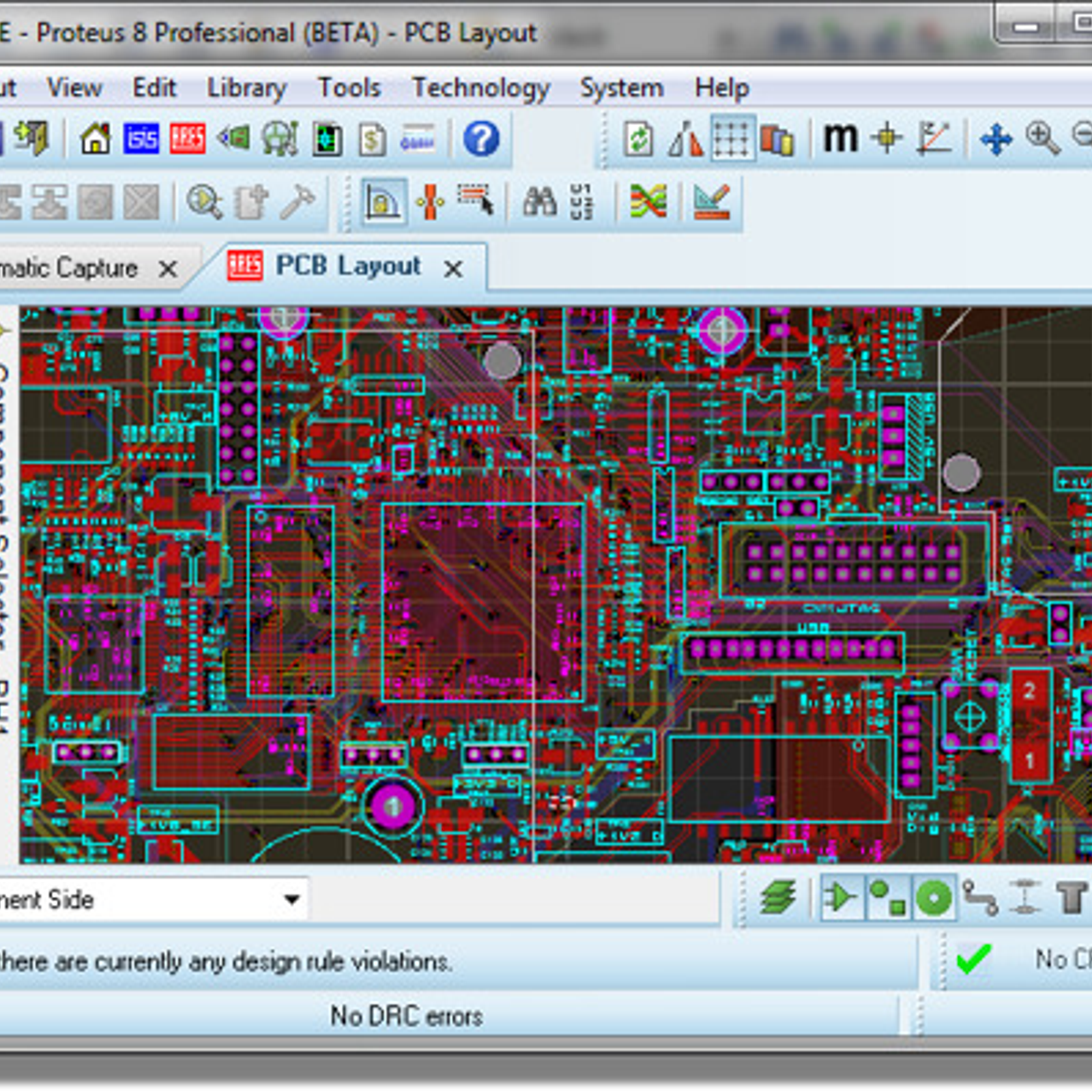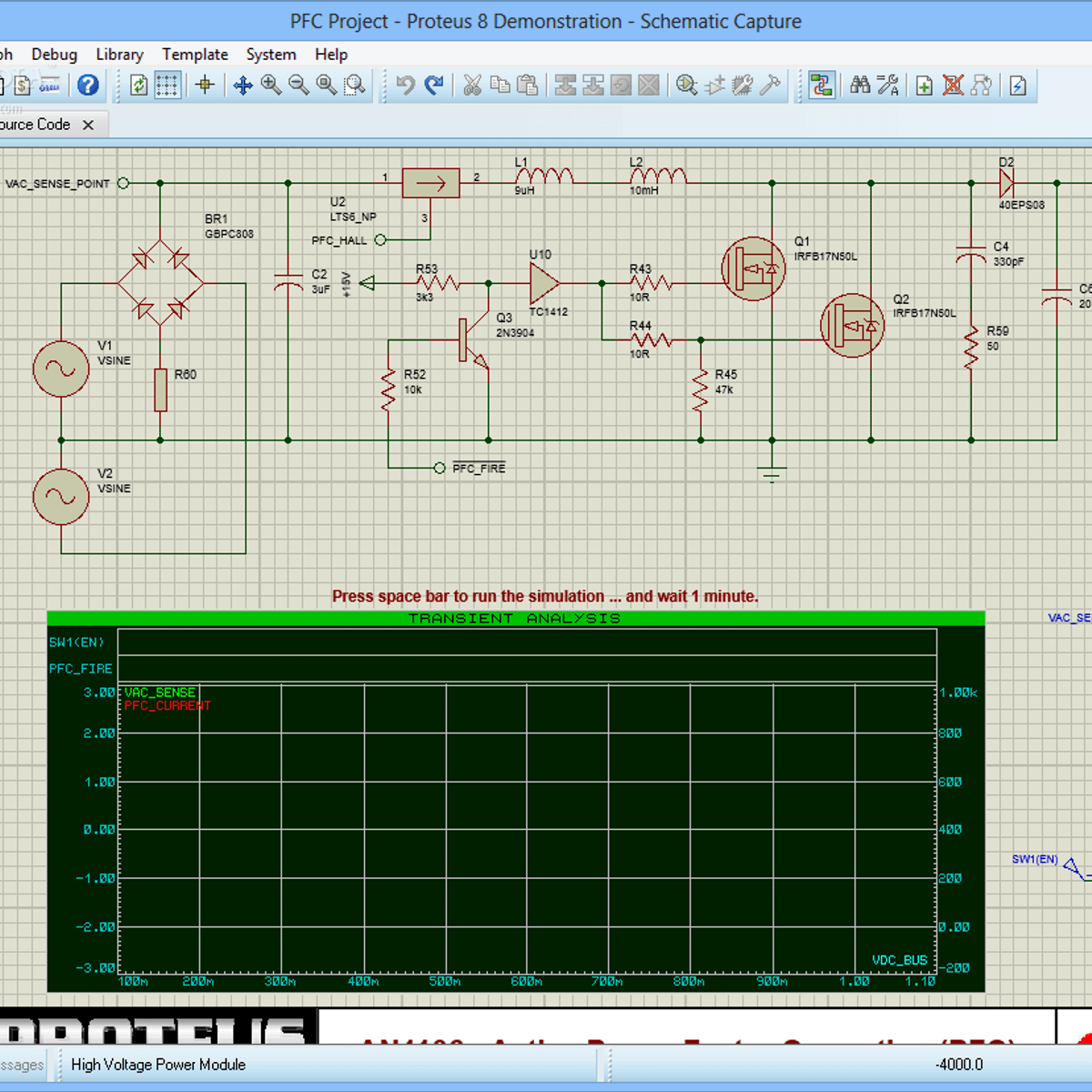Proteus Electronic Software
Proteus 8 Free Download Setup for. The user can design different electronic circuits with all the necessary components easily. Software Full Name: Proteus 8.0.
Electronic design and simulation on your PC. It's one of the most complete electronic tool packs on the market as in its version 8.5 (the newest of them all), it allows us to create from our PC all sorts of PCBs or printed circuit boards using almost 800 different microprocessors, and simulate their real-life functioning straight from the circuit's schematics. And as couldn't be otherwise taking into account modern times, it integrates tools with which we can design and simulate within the Arduino environment, one of the most popular boards at present.

The main components of Proteus Design Suite This software includes two main components around which the program's entire functioning revolves:. ISIS: the acronym of Intelligent Schematic Input System. The program that allows us to carry out the electric design of the circuit, including all sorts of components such as resistors, coils, capacitors, power supplies and even microprocessors. ARES: the acronym of Advanced Routing and Editing Software. It's the tool aimed at the design of printed circuit boards or PCBs, with routing, location and editing functions for electronic components. Where can I download ISIS and ARES?
Well, you can't get hold of them as standalone applications, so to be able to make the most of all their features you'll have to get hold of the full version of Proteus that, despite having to pay for it, comes along with a trial version of the official Labcenter Electronics website so that you can try out all its functions before deciding whether to purchase it or not. Apart from these two programs, this software comes along with different modules like VSM that, integrated into ISIS, allows us to simulate different features of integrated circuits in real-time, or Electra, the self-routing module that allows us to trace routes automatically between components, searching for the optimal path to improve the circuit's speed. Which one's better? Proteus or Multisim? That's the eternal doubt for students and electronics professionals when it comes to choosing a program to simulate electronic circuits and, as always, there's no such thing as a universal answer that satisfies them all because it basically depends on the use given to the application.

For instance, if you're looking for a program for the analog and digital simulation of circuits, the product developed by National Instruments Corporation may suit your needs since it's the best software in this category. However, if you're more into simulating microprocessors, Multisim probably lacks the basics you're looking for and that's where Proteus comes in since it includes loads of libraries that allow you to simulate different models. So each one is good at different things and it's up to you to choose.
Contents. History The first version of what is now the Proteus Design Suite was called PC-B and was written by the company chairman, John Jameson, for in 1988. Schematic Capture support followed in 1990, with a port to the Windows environment shortly thereafter. Mixed mode was first integrated into Proteus in 1996 and microcontroller simulation then arrived in Proteus in 1998. Shape based autorouting was added in 2002 and 2006 saw another major product update with 3D Board Visualisation.
Visual Designer
More recently, a dedicated IDE for simulation was added in 2011 and MCAD import/export was included in 2015. Feature led product releases are typically biannual, while maintenance based service packs are released as required. Product Modules The Proteus Design Suite is a Windows application for schematic capture, simulation, and PCB layout design. It can be purchased in many configurations, depending on the size of designs being produced and the requirements for microcontroller simulation.
All PCB Design products include an autorouter and basic mixed mode SPICE simulation capabilities. Schematic Capture Schematic capture in the Proteus Design Suite is used for both the simulation of designs and as the design phase of a PCB layout project. It is therefore a core component and is included with all product configurations. Microcontroller Simulation The micro-controller simulation in Proteus works by applying either a hex file or a debug file to the microcontroller part on the schematic. It is then co-simulated along with any analog and digital electronics connected to it.
This enables its use in a broad spectrum of project prototyping in areas such as motor control, temperature control and user interface design. It also finds use in the general hobbyist community and, since no hardware is required, is convenient to use as a training or teaching tool. Support is available for co-simulation of:. PIC10, PIC12, PIC16,PIC18,PIC24,dsPIC33 Microcontrollers. AVR (and ), 8051 and Microcontrollers. 8051, ARM7, and ARM Cortex-M3 Microcontrollers.
Proteus Electronic Software
MSP430, PICCOLO DSP and ARM Cortex-M3 Microcontrollers. Parallax Basic Stamp, Freescale HC11, 8086 Microcontrollers. PCB Design The PCB Layout module is automatically given connectivity information in the form of a from the schematic capture module. It applies this information, together with the user specified and various design automation tools, to assist with error free board design. Design Rule Checking does not include high speed design constraints. PCB's of up to 16 copper layers can be produced with design size limited by product configuration.
3D Verification The 3D Viewer module allows the board under development to be viewed in 3D together with a semi-transparent height plane that represents the boards enclosure. Output can then be used to transfer to mechanical CAD software such as or for accurate mounting and positioning of the board. See also.